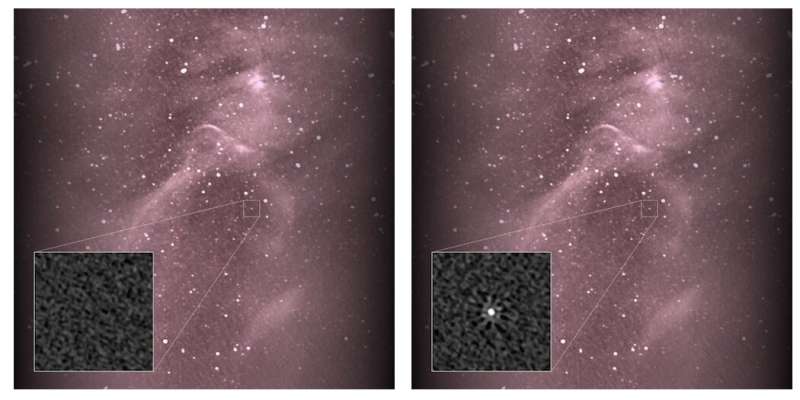April 17, 2023 report
This article has been reviewed according to Science X's editorial process and policies. Editors have highlighted the following attributes while ensuring the content's credibility:
fact-checked
peer-reviewed publication
trusted source
proofread
PSR J0901-4046 is the most magnetized radio pulsar known, study finds

Astronomers have investigated an ultraslow radio pulsar known as PSR J0901-4046, finding that it has an extremely high magnetic field—at a level of 30 quadrillion Gauss. The discovery, published April 7 in Physical Review D, makes PSR J0901-4046 the most magnetized radio pulsar known to date.
Extraterrestrial sources of radiation with a regular periodicity, known as pulsars, are usually detected in the form of short bursts of radio emission. Radio pulsars are generally described as highly magnetized, rapidly rotating neutron stars with a lighthouse beam of radiation that produces the pulsed emission.
PSR J0901-4046 was discovered on September 27, 2020, at 1284 MHz with the MeerKAT radio telescope and associated with an ultra-slowly rotating magnetized neutron star. It has an ultralong spin period of approximately 75.9 seconds—therefore it rotates more than three times slower than the former record holder PSR J0250+5854.
The strength of the surface magnetic field of PSR J0901-4046 was initially estimated to be at a level of 130 trillion Gauss, based on its period. However, further studies found that such a magnetic field is wholly insufficient for this pulsar to operate, excluding the hypothesis that PSR J0901-4046 may be a magnetar. Moreover, it remained unclear how such a slowly rotating source is still active in the radio band.
That is why a team of astronomers led by Denis Sob'yanin of the P. N. Lebedev Physical Institute of the Russian Academy of Sciences in Moscow, Russia, decided to take a closer look at PSR J0901-4046.
"In this paper we address the problem of the origin of radio emission from the apparently dead PSR J0901-4046. Eschewing the model of magnetic-dipole radiation and solely using energy transformation during plasma multiplication above the polar cap of a strongly magnetized rotating neutron star, we show that the actual surface magnetic field of PSR J0901-4046 is 2 orders of magnitude higher than the conventional estimate," the researchers explained.
The study found that PSR J0901-4046 has a magnetic field of at least 27 quadrillion Gauss. Such a strong magnetic field explains the existence of plasma multiplication and the observed radio emission from this pulsar. Therefore, PSR J0901-4046 becomes the most magnetized radio pulsar so far discovered.
The astronomers explained that the ultraslow rotation of PSR J0901-4046 implies that the surface magnetic field strength should exceed the value of 25 quadrillion Gauss. This is needed for an efficient cascade multiplication of an electron-positron plasma generating radio emission.
The researchers added that the extremely strong magnetic field of PSR J0901-4046 indicates that the pulsar slows down not by magnetic-dipole radiation, but rather by an electric current of about 56 megaamperes, when rotational energy is expended in accelerating charged particles over the polar cap. In this scenario, the rotational energy of the neutron star fully transforms into the energy of primary particles in the acceleration gap, and not into the energy of magnetic-dipole radiation.
More information: D. N. Sob'yanin, Ultraslow PSR J0901-4046 with an ultrahigh magnetic field of 3.2×1016 G, Physical Review D (2023). DOI: 10.1103/PhysRevD.107.L081301. On arXiv: arxiv.org/abs/2304.03702
Journal information: Physical Review D , arXiv
© 2023 Science X Network




















